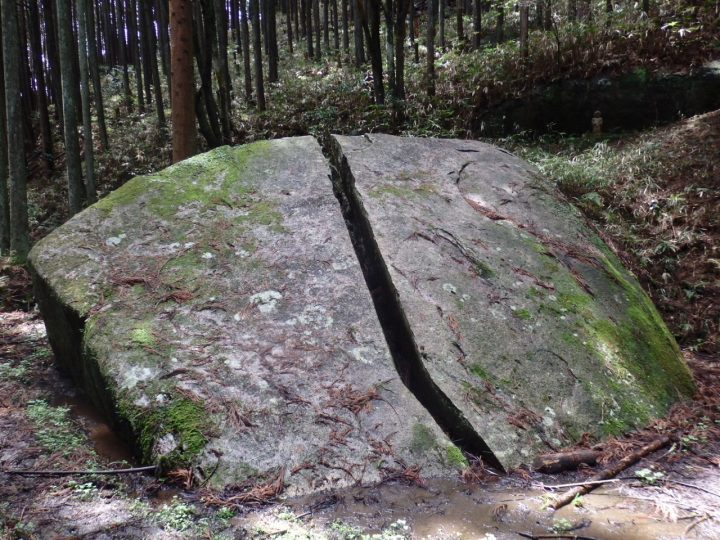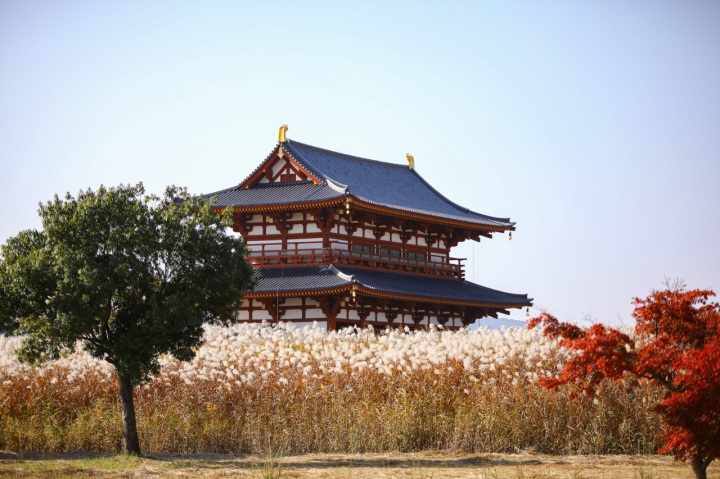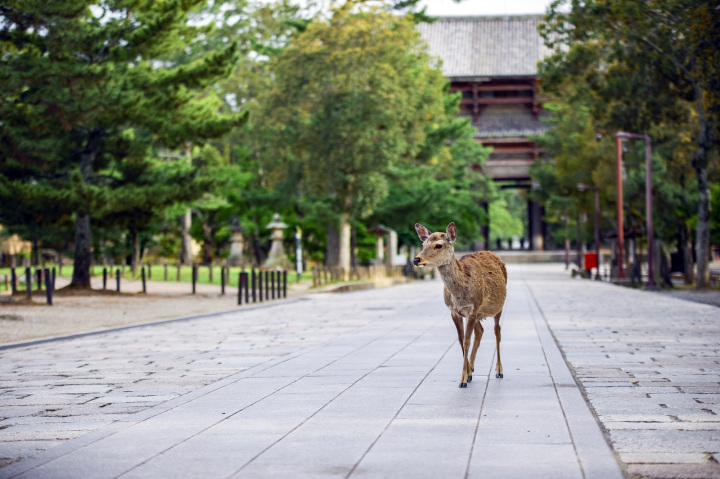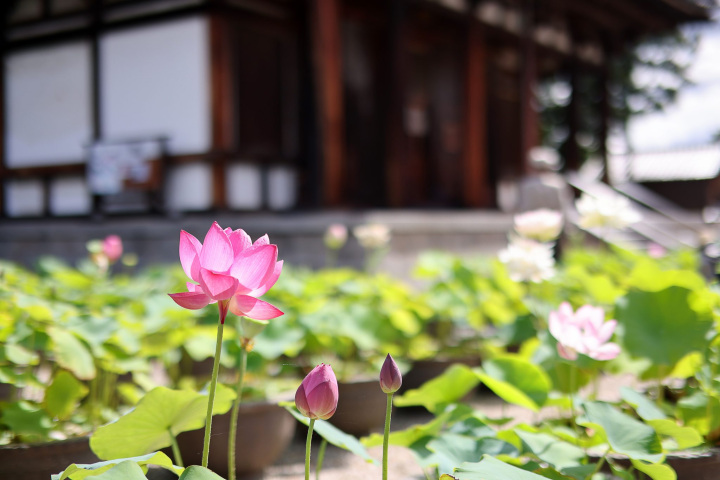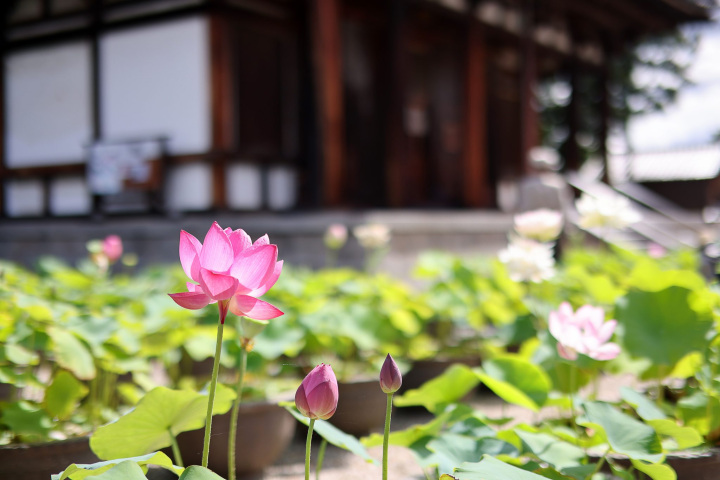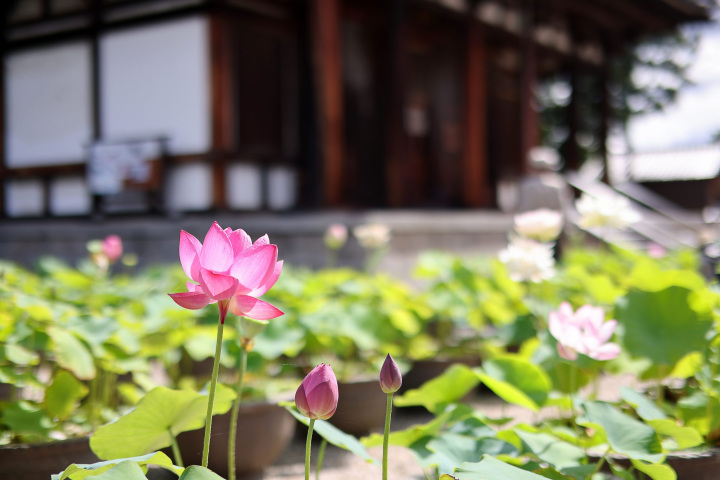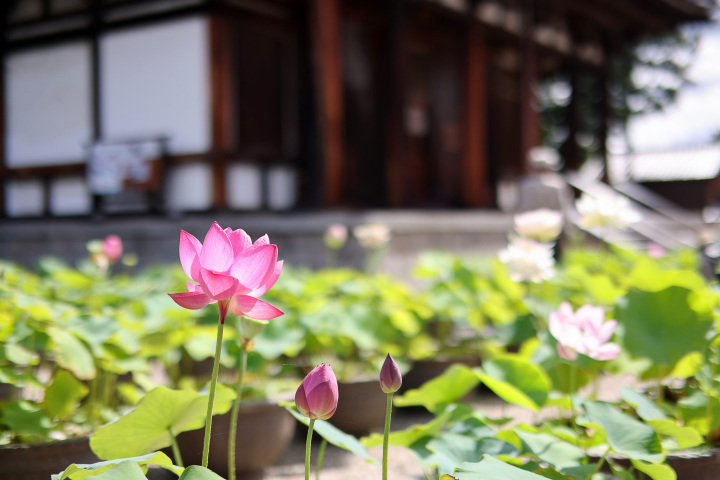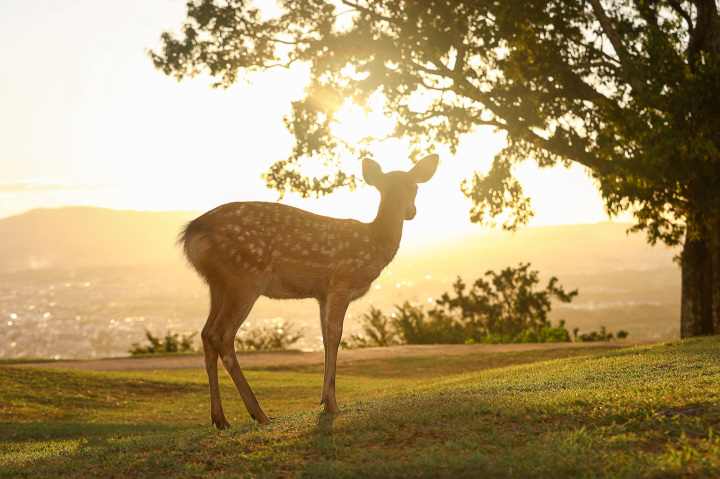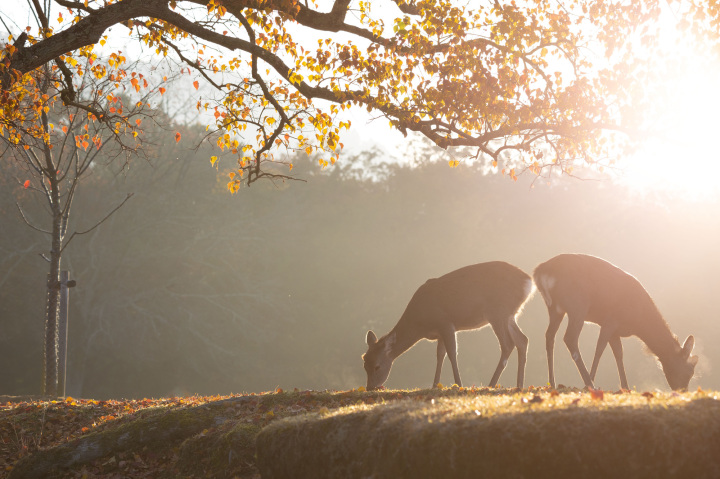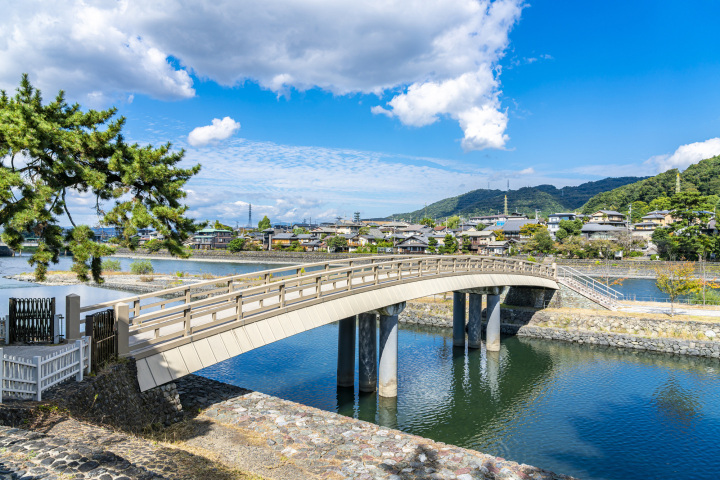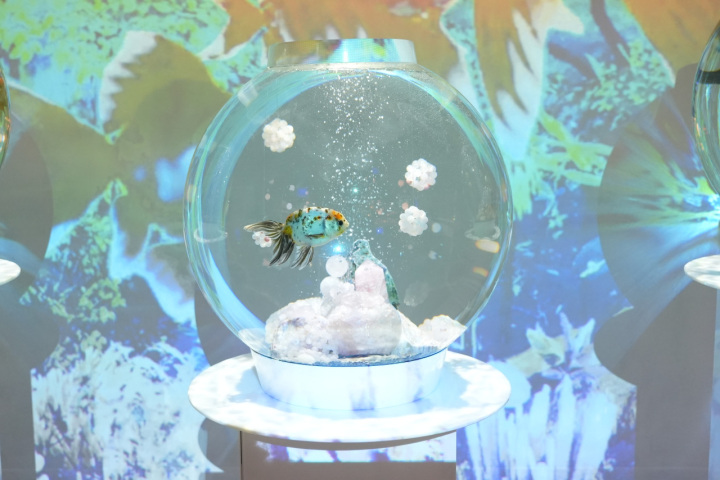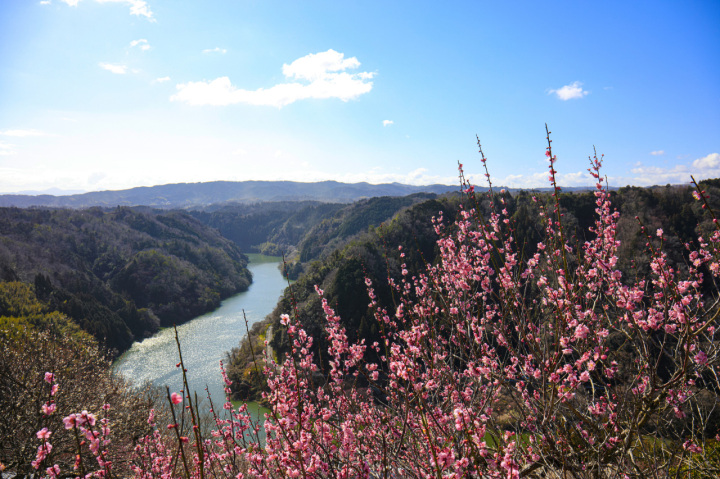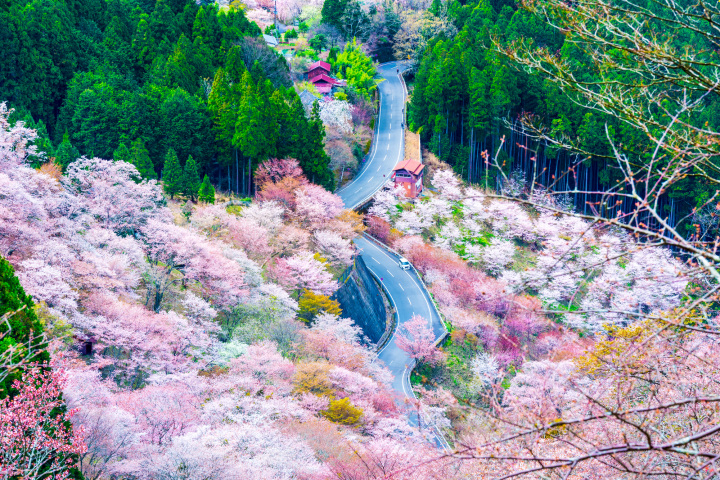Itinerary for 2 days and 1 night from Hōryūji to Nara Park to feel the history of Asuka and Nara Periods.
The Nara Period began in 710 when the capital was established in Heijokyo. The Nara period was marked by exchanges with the Tang Dynasty and other Asian countries, and a rich international culture flourished. Please take a look at this itinerary to experience the culture and history of the period, including Hōryūji , which is said to be the world's oldest wooden structure completed in the Asuka Period.
- Days required
- 2 days and 1 night
- Main methods of transportation
- Train, bus, walking
Itinerary features
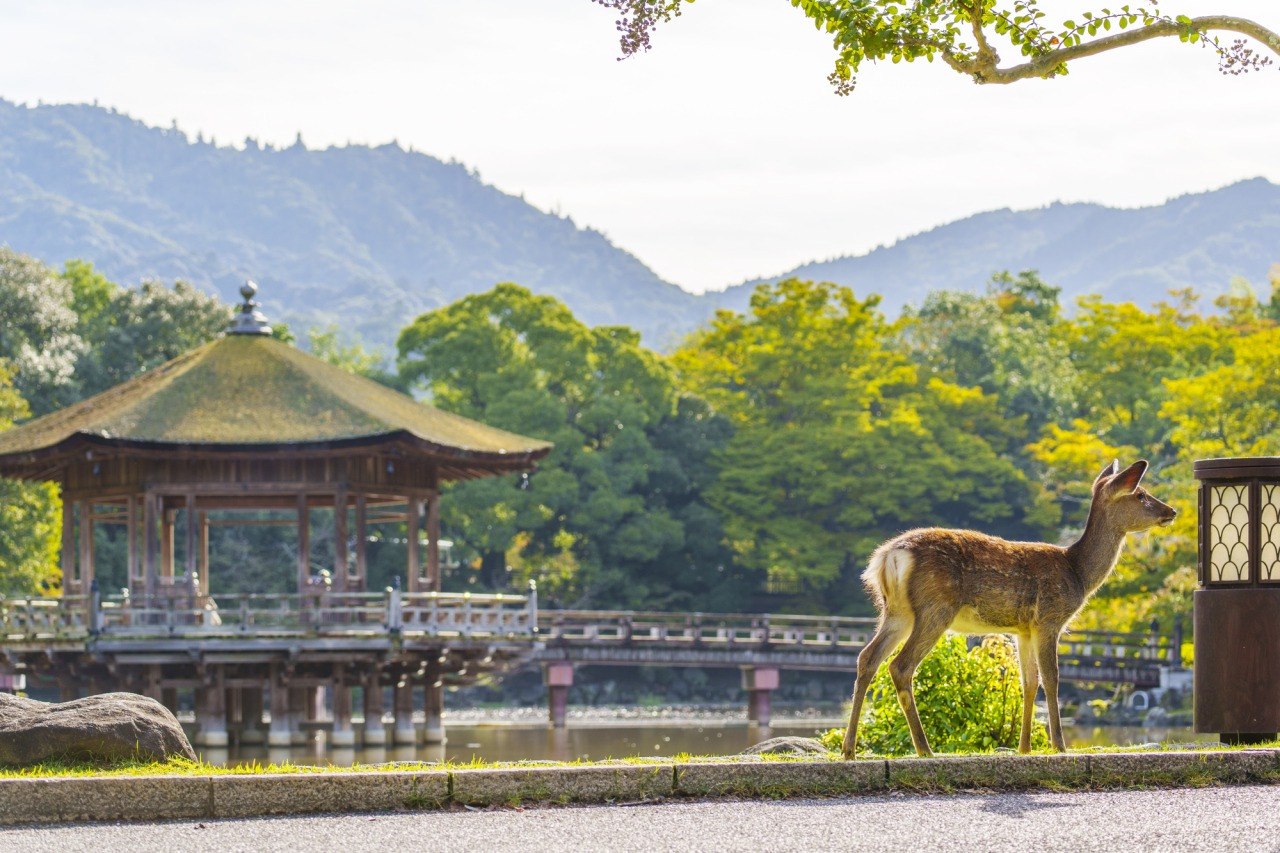
20 minutes on foot or 5 minutes by bus (Nara Kotsu Line 72)
Hōryūji
Hōryūji , a World Heritage Site, is Japan's world-class ancient temple. The temple, founded by Prince Shotoku, is said to be the oldest existing wooden structure in the world, completed around 607, more than 1,400 years ago. The five-story pagoda, Kondo (Golden Hall), and other majestic structures, interwoven with elegant Buddhist statues and other exhibits, invite visitors to enter a mystical world. In particular, the statues of the Baekje Kannon and the Tamamushi Kitchen are must-sees. Experience the beauty of a place where history and culture come alive.
[Lunch] Around Nishinokyo Station
![[ Undefined: coursed-title-plain ]](/lsc/upfile/courseDetail/0000/0047/47_1_l.jpg)
Unlike the bustling Nara Park area, the historic Nishinokyo area has a peaceful atmosphere with private homes and rice paddies. Along the historical ally from Nishinokyo Station to Yakushiji Temple and Toshodaiji Temple, you can enjoy some Japanese soba noodles and other restaurants. The area also has cafes, so enjoying a leisurely lunch is recommended. Two prominent temples in this area (Yakushiji and Toshodaiji) are both Unesco World Heritage sites.
Image: Kintetsu Nishinokyo Station
Yakushi-ji Temple
Established in 680, the unique layout known as Yakushiji-style is also referred to as "Ryugu-zukuri" (Dragon Palace style).
![[ Undefined: coursed-title-plain ]](/lsc/upfile/spot/0001/0007/10007_1_l.jpg)
Yakushiji Temple is a UNESCO World Heritage site. It was established in 680 by Emperor Tenmu as a prayer for the recovery of his empress from illness. When the capital was relocated from Fujiwara-kyo to Nara, it was subsequently moved to its current location in 718. Two three-story pagodas, the Eastern and Western Pagodas, were built around the main hall and lecture hall. The unique layout is known as the Yakushiji-style temple complex, and the magnificent exterior of these main buildings, with their sloped roofs and low floors, is also referred to as "Ryugu-zukuri" (Dragon Palace style).
Unfortunately, repeated fires destroyed most of the buildings, and only the eastern pagoda remains in its original state. The other structures have been rebuilt.
Yakushiji is home to nine national treasures and 26 important cultural properties, and it remains a temple with a strong following of religious practitioners.
After visiting this temple, consider visiting the nearby Toshodaiji Temple.
- Address
- Nara City457, Nshinokyo-cho
- Times
- 9:00 a.m. to 5:00 p.m. (The admission desk will be open until 4:30 p.m.)
- Closed
- Open all year
Toshodai-ji Temple
Founded by the Chinese monk Ganjin, who overcame hardships to come to Japan and spread the correct precepts of Buddhism.
![[ Undefined: coursed-title-plain ]](/lsc/upfile/spot/0001/0008/10008_1_l.jpg)
Toshodaiji Temple, a UNESCO World Heritage Site, was founded in 759 by the Chinese monk Ganjin, who overcame hardships to come to Japan in response to an invitation from Emperor Shomu in order to spread the correct precepts of Buddhism.
After the capital was moved to Kyoto, the temple experienced a period of decline, but it has since been restored several times. The temple complex is beautifully surrounded by greenery, and still conveys the atmosphere of the time of its founding in the Nara period.
Many of the buildings from that time remain, including the Kondo Hall, known for its "Tenpyo roof," the lecture hall, and the treasure hall. The entire temple complex retains its appearance from 1,300 years ago.
- Address
- Nara City13-46 Gojo-cho
- Times
- 8:30 a.m. - 5:00 p.m. (Last entry at 4:30 pm.)
- Closed
- Open all year
Nara Palace Site Historical Park
The ruins of Heijo Palace, the heart of the Heijo-kyo capital.
![[ Undefined: coursed-title-plain ]](/lsc/upfile/spot/0001/0041/10041_2_l.jpg)
The vast field stretching from Kintetsu Saidaiji Station to Shin-Omiya Station is the Heijo Palace Site (World Heritage). Located at the northernmost end of the vast capital of Heijokyo, with a total area of about 120 hectares, it was home to the Imperial Palace and government district. At the time, the government consisted of eight ministries and 100 agencies. The area is said to have been surrounded by earthworks and moats and had 12 gates, three in each direction.
The Nara National Research Institute for Cultural Properties has conducted excavation surveys since 1959. Buildings and ruins such as the Daigokuden and Chodoin, where official ceremonies were held, the Toin Garden, where aristocrats held banquets and ceremonies, the Dairi, where the emperor lived, and the main gate, Suzakumon, have been restored. The entire area has been open to the public since 1998. At Heijokyo Izanaikan Museum, you will discover how the capital was built and how people lived there.
- Address
- Nara CitySaki-cho
- Times
- Opening hours and closing days differ by facility.
For detailed information, please visit the Heijo Palace Site Historical Park official website. - Closed
- Closed days differ by facility.
[Accommodations]Hotels around Sarusawa Pond
![[ Undefined: coursed-title-plain ]](/lsc/upfile/courseDetail/0000/0057/57_1_l.jpg)
Around Sarusawa Pond, where the five-story pagoda of Kofukuji Temple and willows are reflected in the water, you will find a wide variety of restaurants. In addition to Nara's famous kakinoha sushi and green tea porridge, Western and Italian restaurants using local ingredients, as well as dinner at a restaurant in a renovated traditional townhouse, are also recommended.
[Image: Sarusawa Pond
Gango-ji Temple
World Heritage Site: Japan's first Buddhist temple is located in the heart of Naramachi.
![[ Undefined: coursed-title-plain ]](/lsc/upfile/spot/0001/0027/10027_1_l.jpg)
Located in the heart of the Naramachi area, this temple is a must-visit destination for those walking in Naramachi. Its predecessor, Houkouji Temple (also known as Asuka-dera Temple in Asuka Village), was established by the powerful Soga Clan at the end of the 6th century, making it the oldest Buddhist temple in Japan. When the capital moved to Nara, the temple was rebuilt at its current location and renamed Gangoji Temple. Once among the seven prominent temples alongside Todaiji and Kohfukuji, it occupied a significant portion of what is now known as Naramachi. The expansive grounds included a main hall, a lecture hall, a tall five-story pagoda (which was destroyed by fire in 1859), and numerous monks' quarters.
However, after the 10th and 11th centuries, its influence declined gradually. Today, only a few former monks' quarters have been remodeled into the Gokurakudo Hall and the Zen Room, both of which are regarded as national treasures, during the Kamakura period (1185–1333). Roof tiles from the Asuka and Nara periods still exist and continue to be in use, making them Japan's oldest roof tiles. Since the Middle Ages, the temple has earned the devotion of ordinary people, resulting in the discovery of numerous stone Buddhas and folk artifacts on the temple grounds. Horinkan houses several items, including a wooden five-story pagoda from the Nara period that retains its original appearance (National Treasure), a wooden seated statue of Amida Nyorai, and materials related to the faith of ordinary people in the Middle Ages (Important Cultural Properties).
Gangoji Temple was registered as a UNESCO World Heritage site in 1998.
- Address
- Nara City11 Chuin-cho
- Times
- 9:00 - 17:00 (Last entry at 16:30)
Opening/closing times are the same during special exhibitions. - Closed
- Open all year
Kohfuku-ji Temple
The prosperity of Nara is deeply linked to the development of this temple.
![[ Undefined: coursed-title-plain ]](/lsc/upfile/spot/0001/0029/10029_1_l.jpg)
The Kohfukuji Temple was one of the seven most prominent temples of the Nara era and a tutelary temple of the Fujiwara clan, the most influential clan in Japanese history. Nara largely owed its prosperity to the temple's development.
In 710, the Fujiwara clan transferred the predecessor of the present Kohfukuji Temple from Asuka to the Nara capital. Then, the temple extended its influence with the Fujiwara family's prosperity even after the capital moved to Kyoto. The war in 1180 burned down most of the temple, however, in later years, Kohfukuji eventually became the practical ruler of Yamato Province (present Nara Pref.) until the 16th century. They were so influential that they repeatedly appealed to the Imperial Court in Kyoto with soldier monks.
The vast precincts of the temple include the Chukon-do Hall, the Tokon-do Hall, the Hokuen-do Hall, the Nan'en-do Hall, the Five-storied Pagoda, the Three-storied Pagoda, and the Treasure Hall, some of which were constructed in and after the 13th century. As for Buddhist sculptures, many famous articles and masterpieces of the Nara era exist. Of these 136 designated national treasures (Buddha statues, etc.) in Japan, 18 are housed at Kohfukuji Temple. The most famous statue is the Asura Statue.
The five-story pagoda is currently undergoing long-term repair work and cannot be seen from the outside.
- Address
- Nara City48 Noborioji-cho
- Times
- open from 9:00 a.m. to 5:00 p.m. (Last entry is at 4:45 p.m.)
- Closed
- Open all year
Nara Park
The majestic park, fitting for the ancient capital, harmonizes with beautiful lawns and rich natural surroundings, where 1,300 wild deer draw many visitors.
![[ Undefined: coursed-title-plain ]](/lsc/upfile/spot/0001/0089/10089_3_l.jpg)
This vast park, spanning approximately 660 hectares, covers the eastern part of Nara City. It is a majestic park that befits the ancient capital, incorporating Todaiji Temple, Kohfukuji Temple, Kasugataisha Shrine, the Nara National Museum, and the Kasugayama Primeval Forest.
In this park, which harmonizes with beautiful lawns and rich natural surroundings, including 1,000-year-old pine trees, approximately 1,300 wild deer roam in herds. These deer are considered the legendary divine deer of Kasugataisha Shrine, making it a tourist spot that symbolizes the ancient capital of Nara and attracts many visitors.
- Address
- Nara CityKasuga-cho
- Closed
- Open year-round
[Lunch] Nara Park area
![[ Undefined: coursed-title-plain ]](/lsc/upfile/courseDetail/0000/0064/64_1_l.jpg)
Teahouses with an old-fashioned atmosphere are scattered around Nara Park. They are recommended for lunch, as you can take a break or have a meal at a table. There are also cafes and restaurants on the road from Nara Park to Todaiji Temple that are perfect for lunch, so use Google Maps to find one that interests you.
[Image: Mizuya Chaya
Todai-ji Temple
Nara's most famous temple, featuring its principal image, the Vairocana Buddha, is known worldwide as the Great Buddha of Nara.
![[ Undefined: coursed-title-plain ]](/lsc/upfile/spot/0001/0001/10001_1_l.jpg)
Todaiji Temple and its principal image of the Great Buddha, widely known as Daibutu, represent Nara in all its aspects. Daibutsu is housed in an imposing wooden structure that is the largest in the world.
As the imperial ordinance for the construction in 743, the Great Buddha was cast under full state sponsorship and people's cooperation. The consecrating ceremony was held in 752. It took almost 40 years to complete the whole temple complex, including pagodas, halls, and gradually extended areas. Even after the capital moved to Kyoto, the temple enjoyed its prosperity under the protection of successive emperors. However, the two big wars attacked the temple in 1180 and 1567, severely damaging or burning most of it.
However, with tremendous efforts, the temple was restored each time. Many of the current buildings were reconstructed after that. However, a large number of noted Buddhist statues and buildings from the Nara era remain. Todaiji Temple is a Unesco World Heritage site.
A typical sightseeing course is as follows:
the Nandai-mon Gate
the Daibutsu-den Hall
the Belfry
the Shunjo-do Hall
the Sammai-do Hall (Shigatsu-do)
the Hokke-do Hall (Sangatsu-do)
the Kaisan-do Hall
the Nigatsu-do Hall
the Tegai-mon Gate
the Kaidan-in
Even if you quickly complete the whole course, it takes 4 hours. If you don't have much time, it's better to focus on the Daibutsu-den Hall first, then the Nigatsu-do Hall (the Hall for the Shunie ceremony in March), where you can see an incredible sunset in the west.
(15 minutes' walk from Kintetsu Nara Station)
- Address
- Nara City406-1 Zoshichou
- Times
- ■Great Buddha Hall (Daibutsuden)
April to October: 7:30 AM - 5:30 PM
November to March: 8:00 AM - 5:00 PM
■Hokkedo Hall (Sangatsudo) & Kaidando Hall
Open year-round: 8:30 AM - 4:00 PM
■Todaiji Temple Musem
April to October: 9:30 AM - 5:30 PM (last entry at 5:00 PM)
November to March: 9:30 AM - 5:00 PM (last entry at 4:30 PM) - Closed
- Open all year
Nigatsu-dō
![[ Undefined: coursed-title-plain ]](/lsc/upfile/courseDetail/0000/0068/68_1_l.jpg)
Nigatsu-dō is located on a hill at the eastern end of the Todaiji Temple grounds, and from the stage you can see the whole city of Nara. When the weather permits, visitors can enjoy a spectacular view of the cityscape and mountains at sunset. After the sun goes down, the lanterns are lit and the atmosphere becomes even more magical, making this a perfect spot to end your visit to the ancient capital of Nara.
Image: Nigatsu-dō of Todaiji Temple
